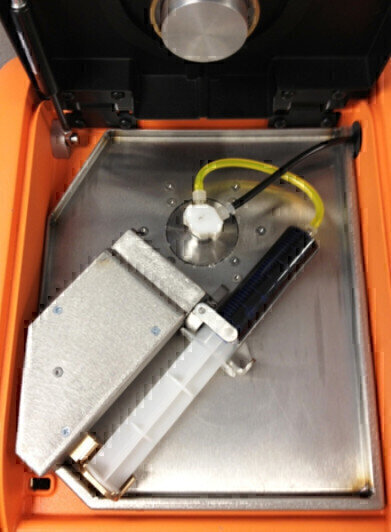Analytical Instrumentation
Monitoring Chlorine to Prevent Refinery Corrosion
Apr 20 2016
Chlorine in crude oil, if not removed, can hydrolyze during processing to form hydrochloric acid. The crude oil desalter is the first line of defense in the prevention of corrosion. However, in order to provide a proper defense, the correct chloride monitoring must be put in place.
Unfortunately, many refiners use a 'set it and forget it' mentality, relying on semi-periodic testing of inorganic chlorides to get the job done. However, what if a desalter upset occurs in between testing periods? Worse yet, what if an organic chlorine slug is present in the incoming crude? The desalter will remove only inorganic chlorides, not organic chlorides, and any chlorides that pass through the desalter have the potential of causing fouling and corrosion issues.
Even refiners who don’t display a 'set it and forget it' mentality typically only monitor inorganic chlorine. While this is very important for typically-occurring inorganic salts and for monitoring desalter efficiency, this does not capture all the threats; this is why refiners should also be looking at total chlorine.
X-ray Fluorescence (XRF) Spectrometry, while widely used for total sulfur testing, has traditionally been an ineffective tool for the direct measurement of total chlorides in crude oil, due to the settling of inorganic chloride salts during the measurement process. This settling leads to poor precision and an affinity for other measurement or sample extraction techniques.
Recently XOS introduced a continuous flow option to their Monochromatic Wavelength Dispersive XRF (MWDXRF) benchtop chlorine spectrometer, called the Clora Accu-Flow. The Clora Accu-Flow uses a stepper motor for continuous injection of crude oil during the sample measurement, eliminating the settling of inorganic chloride salts and allowing for the direct measurement of total chlorine without water wash extraction or sample distillation.
The Accu-Flow design works for crude oils with a maximum viscosity of 2000 cSt at 70°F. A 60 ml crude oil sample is injected at a 20 ml/min flow rate into the yellow tubing. The sample flows from the yellow tubing through the Accu-Flow insert assembly, where the sample is exposed to X-rays. The sample then flows through the black drain tube where it is collected outside the analyser. Typical measurement time is three minutes...
For more information or to read the rest of this article, click here.
Digital Edition
PIN 25.2 Apr/May
April 2024
In this Edition Safety - Carbon monoxide toxic and flammable gas detection Analytical Instrumentation - Density: A fundamental parameter at critical stages within the petroleum sector...
View all digital editions
Events
May 03 2024 Seoul, South Korea
May 05 2024 Seville, Spain
May 06 2024 Riyadh, Saudi Arabia
May 06 2024 Houston, Tx, USA
May 06 2024 Houston, Tx, USA


















